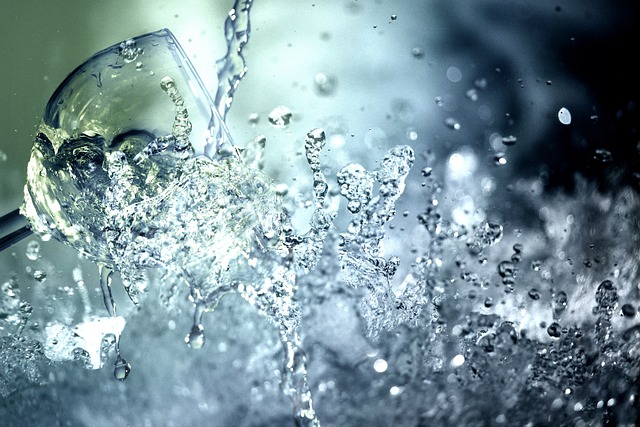Ice baths, with temperatures between 50-60°F (10-15°C), offer a popular post-exercise recovery method for athletes and fitness enthusiasts. They initially constrict blood vessels to reduce inflammation and swelling in overworked muscles, then dilate them to increase circulation, speeding repair and growth. The cold temperature also alleviates pain from delayed onset muscle soreness (DOMS). Home cold plunge setups, featuring insulated tubs with ice packs, safety mats, and timers, mimic traditional ice baths for effective muscle recovery. Regular use enhances overall recovery, allowing athletes to train more swiftly.
Unwind and accelerate your post-exercise recovery with a home cold plunge setup. This article guides you through harnessing the power of ice baths for muscle recovery, offering insights into the science behind cold therapy and its numerous benefits. From understanding the impact of ice baths to creating your own optimal environment, learn how to incorporate this game-changing practice into your routine. Discover the components needed for a complete home setup and unlock your body’s potential for faster recovery and enhanced performance.
Understanding Ice Baths for Muscle Recovery
Ice baths have gained popularity as a post-exercise recovery tool, particularly among athletes and fitness enthusiasts. The practice involves immersing yourself in cold water, typically around 50-60°F (10-15°C), for a short period after intense physical activity. This method is known to stimulate various physiological responses in the body that aid in muscle recovery.
When you step into an ice bath, your blood vessels constrict, reducing blood flow to the extremities and core. This process helps to minimize inflammation and swelling in overworked muscles. As you acclimate to the cold, blood vessels then dilate, increasing blood circulation back towards the heart. This enhanced circulation brings essential nutrients and oxygen to the recovered muscles, promoting faster repair and growth. Moreover, the shock of the cold temperature can also reduce pain and discomfort associated with delayed onset muscle soreness (DOMS), allowing for quicker post-workout recovery.
Components of a Home Cold Plunge Setup
Creating a home cold plunge setup is an excellent way to enhance your post-exercise recovery routine, especially for athletes and fitness enthusiasts looking to optimize muscle recovery after intense workouts. The key components of this setup revolve around constructing a compact and efficient ice bath system that mimics the benefits of traditional ice baths found in sports medicine.
Firstly, you’ll need a large plastic tub or container suitable for holding cold water. Opt for materials that insulate effectively to maintain the temperature. Filling it with ice packs or frozen gel packs is essential to create the chilling effect required for muscle recovery. Ensure the tub has a non-slip mat at the bottom for safety and stability during immersion. Additionally, a waterproof timer and temperature gauge are valuable additions to control and monitor the water temperature, typically between 50-60°F (10-15°C), ideal for stimulating blood flow and reducing inflammation.
Benefits of Cold Therapy for Post-Exercise Recovery
Cold therapy, especially in the form of ice baths for muscle recovery, has gained significant popularity among athletes and fitness enthusiasts as a powerful tool for post-exercise recovery. The benefits are numerous; it helps reduce inflammation, which is common after intense workouts, and can alleviate muscle soreness and stiffness. By immersing yourself in cold water, you stimulate blood vessels to constrict, which reduces blood flow to damaged muscles. This process aids in minimizing swelling and promoting the healing process.
Furthermore, cold therapy triggers a response in the body’s natural pain receptors, decreasing their sensitivity, and thus alleviating post-workout discomfort. Regular use of ice baths can improve overall recovery time, enabling athletes to return to their training routines faster. It’s a simple yet effective way to harness the power of cold for optimal physical performance and well-being.
Creating and Maintaining Your Optimal Cold Plunge Environment
Creating an optimal cold plunge environment for post-exercise recovery involves several key elements. Firstly, ensure your plunge pool or tub is deep enough to fully submerge your body, typically around waist-deep for adults. Fill it with ice to create a refreshing and invigorating temperature—ideally between 50–60°F (10–15°C). This icy water helps reduce inflammation and aids in muscle recovery after intense workouts.
Maintaining this setup requires regular refilling and replenishing of the ice as it melts, along with keeping the water clean and free from debris. Consider using a cover to prevent dust or bugs from entering the tub when not in use. Additionally, incorporating a timer can help manage your plunging duration, with recommendations varying from 10–15 minutes per session. The optimal cold plunge environment should leave you feeling refreshed, invigorated, and ready for whatever comes next.
Integrating a home cold plunge setup into your post-exercise routine offers a powerful way to accelerate muscle recovery using ice baths for muscle recovery. By understanding the benefits of cold therapy and following the outlined steps, you can create an optimal environment to enhance your body’s natural healing process. Incorporate this practice into your wellness regimen to experience improved performance and faster recovery times.
